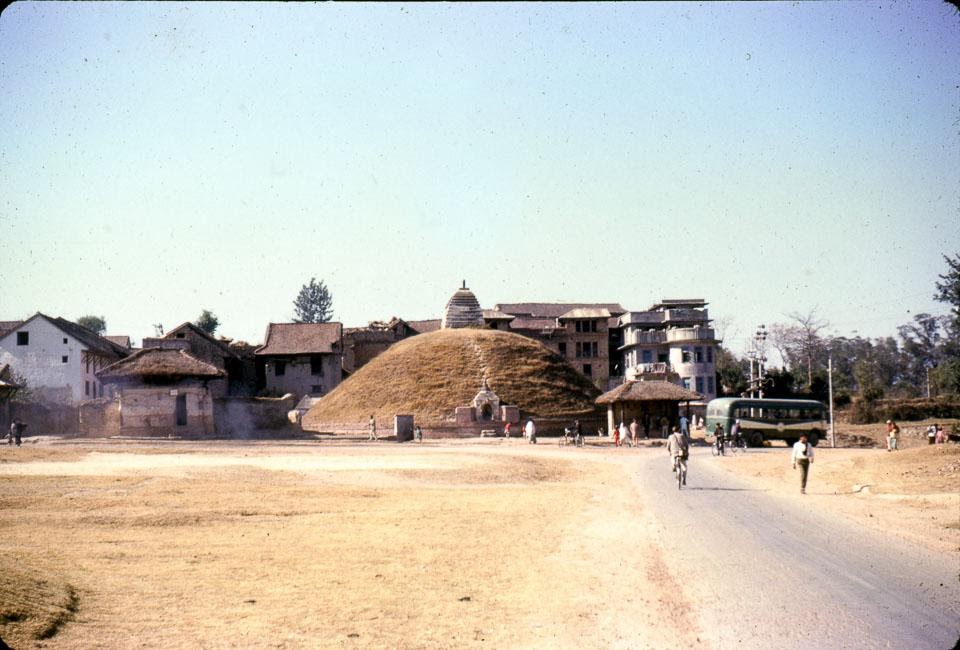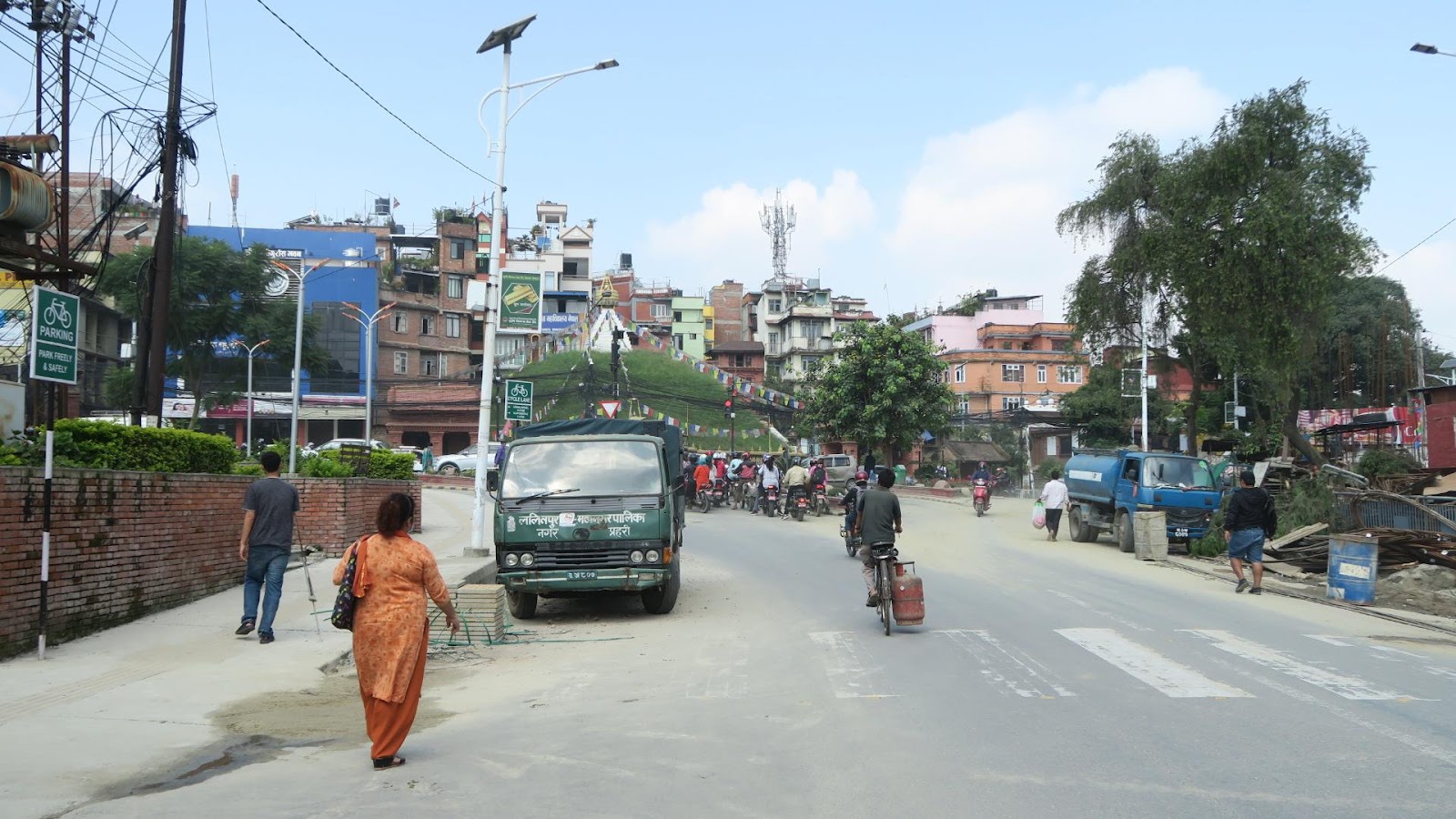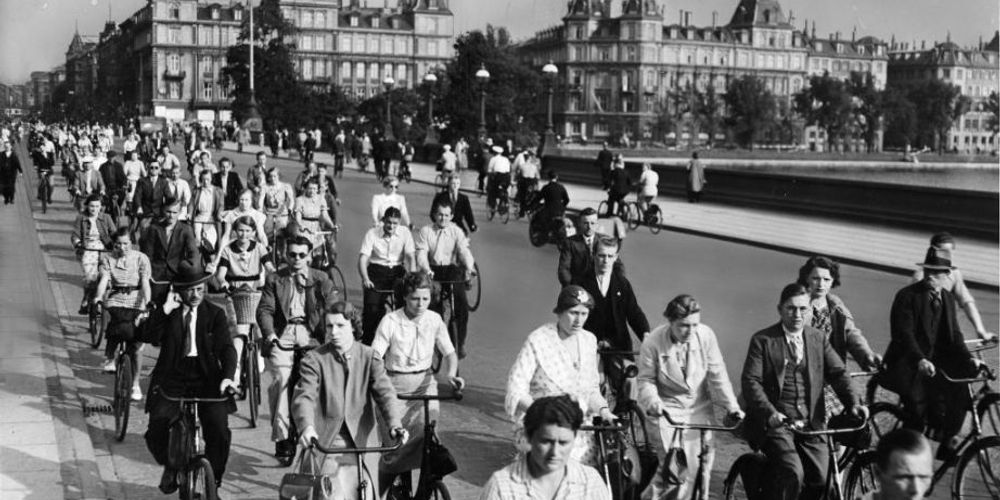There is a lot for Kathmandu to learn from the Danish capital’s commitment to a culture of cycling.
In the early 1990s, Kirti Joshi used to cycle to high school. He stopped cycling after two near-fatal crashes, in one of which he was even hit by an oncoming speeding vehicle.
“Kathmandu’s topography is suitable for cycling, but the rising number of vehicles has made roads unsafe for cyclists,” says Joshi, now an urban planner.
After the collapse of the Panchayat regime, Kathmandu Valley witnessed a massive increase in motor vehicle ownership, motorable roads, along with an urban sprawl in the 1990s. Before this, many people in Kathmandu, including Joshi’s father, routinely rode a bicycle to work. At one point in time, only rich elites in Nepal could afford bicycles, but by the 1960s, many commoners were riding them. By the 1980s, the bicycle had even been demoted to a disparaging status, as if to be used only by the lower classes.
Joshi remembers an incident from 1985.
“I was visiting a shop with my mother. She used to buy monthly groceries there,” says Joshi. “At some point during an exchange between the shopkeeper and my mother, he pointed to me and condescendingly said, ‘Oh, his father rides a bicycle.’ That was the first time I realised that bicycles a lower status.


In his book, Kathmandu: Then and Now, Tirtha Narayan Manandhar recounts how the first bicycles arrived in Kathmandu in 1903. “Bicycles too were in the possession of some selected officials in the royal palace. When my father was young, around the year 1903 AD, some Ranas and certain dignitaries imported a few bicycles from India and they rode them for pleasure. General Soor Samsher was one among them.”Click picture for enlargement

Bicycles and cars arrived in Kathmandu around the same time, in the early 1900s. By then, in western cities such as Copenhagen, bicycles were already popular and being marketed to the masses.
In 1925, Manandhar’s father Asta Narayan opened Kathmandu’s first bicycle store, the Pancha Narayan Asta Narayan, which still exists today. Asta Narayan first imported six British-made Hercules bicycles from Calcutta.
“The target buyers of these bicycles were the Ranas and others hailing from the upper class from the palace,” recounts Manandhar in his book. A bicycle cost around NRs 100 then, more than an ordinary government official’s annual salary. Bicycles were simply out of the common person’s reach.

“By the 1960s, bicycles were already the commoner’s transport mode — not associated with social status — and were utilitarian rather than recreational,” remembers journalist Kanak Mani Dixit who cycled occasionally until 2014. Photographs from the 1960s show plenty of bicycles, along with cars, in Kathmandu’s streets.

In 1956, the opening of Tribhuvan Rajpath linking Kathmandu to the Terai and the Indian Border increased the import of motor vehicles. Even until the restoration of democracy in 1990, there were very few private vehicles between the residents of Kathmandu. But with the economic liberalisation that followed, many people started buying cars and motorbikes while discarding bicycles.
State policies also showed support for motorisation, allowing the city to acquire an ugly urbanity that proved to be unsafe for cyclists. Joshi stopped cycling due to safety concerns while Dixit gave up his hobby because of increasing air pollution.
Today, while Kathmandu residents embrace cars as if they were indispensable, many cities around the world are discouraging the use of cars and promoting bicycles. No city has a more noteworthy success story than Copenhagen; no city promotes cycling as ambitiously as Copenhagen does.

I first visited Copenhagen, one of the world’s most cycle-friendly cities, in 2009. It was summer, the best time to visit the city. Sunshine, warm weather, and vibrant streets made the city inviting. Shoals of cyclists zoomed past me in every direction. Many rode on simple bicycles, usually with a wicker basket in the front, and many had a unisex drop-frame design — what we might consider here in Kathmandu as old-fashioned and unattractive.
I was struck by how all kinds of people were riding bicycles — kids and youths, middle-aged people and the elderly, women and men, blue-collar and white-collar, alone or with a pillion rider. Even pregnant women and families with kids could be seen on bikes. Cyclists hopped on the train with bicycles. They even had free bicycle parking facilities in train stations. No wonder Copenhagen is considered the ‘bicycle capital’ of the world.
Cycling is an integral part of Danish culture. Copenhagen, the capital city with a population of 795,000, has more bicycles than inhabitants and five times as many bicycles than cars. Nearly half of the total travel in the city is done on bicycles. The city of 180 km2 also boasts one of the most extensive cycling infrastructures in the world, with over 375 km of segregated cycle tracks and about 100 km of cycle lanes and green cycle routes.
Copenhagen’s cycling success didn’t happen by chance; the city has a long history of promoting and integrating cycling in its transport plans. Copenhagen embraced cycling as a way to build a liveable city, even as it struggled against the pressures of a car-centric modernism.
In the first decade of the 20th century, the introduction and mass production of ‘safety’ bicycles, with many of the features that we see on bikes today, made this form of travel accessible to the common folk. The high-wheeled bikes that were popular earlier were accessible only for elite and adventurous men. While the changes in design reduced the status of the bicycle in Danish society, it began to get increased acceptance as an everyday utility, with women beginning to use them as well.
In the 1890s, before motorised vehicles rolled on city streets, bicycles competed with horses for space. The Bicycle Lane association was consequently founded in 1897 to lobby for separate lanes. Cycle lanes were eventually built along the main roads that entered cities, demarcated from both horse tracks and sidewalks by curbs. To this day, the association — established later as the Danish Cyclists’ Federation — continues to lobby for a better cycling environment.
In the early 1900s, bicycles met a new competitor — the car. Horse tracks turned into motor roads with more roads being built. Road engineers and traffic experts continued to build cycle lanes on the newer, larger roads, but primarily to improve motorised traffic. By 1935, the city had 100 kms of cycle lanes, comprising a quarter of the road network in Copenhagen.
After the second world war, Denmark restricted its import of cars to tackle a financial crisis. By the early 1950s, however, car ownership had shot up due to the lifting of restrictions on import, reduction of prices, and a booming economy which increased individual disposable income. The growth of suburbs also contributed to increased purchases. Politicians, police, and transport experts viewed cars as the future, and bicycles as remnants of a by-gone era. The traffic police even proposed removing some cycle lanes as policies promoted cars and public transportation instead. The cyclists’ share of all traffic fell dramatically and cars became the all-powerful mode of transport of the time.
Despite Copenhagen’s prioritisation of cars, it continued integrating cycle lanes in road construction schemes — an important reason behind the city’s steady cycling culture. Many Danish traffic engineers and urban planners were cyclists themselves which helped them empathise with cyclists and minimise the resistance against cycle-friendly infrastructure.
The 1970s saw a renaissance of cycling culture in Copenhagen. In the mid-1970s, after the global oil crisis and the consequent recession, the city started to rethink its car-centric approach to urban planning. A grassroots environmental movement and political pressure from leftist groups pushed for a move away from cars, with demands for improved safety for cyclists. To draw attention to the safety of cyclists, activists painted white crosses on the roads where cyclists had been killed. Copenhageners turned out on the streets in masses, calling for safer streets while protesting against the dominance of cars. One such massive protest was led by the Danish Cyclists’ Federation against the city’s plans to build a motorway across a lake.

In the 1980s, Copenhagen found itself on the brink of bankruptcy. This deprived the city of the ability to finance expensive roads and subway extensions, forcing planners to look for inexpensive mobility options. The city’s urban planning vision was reoriented towards cycling infrastructures once again.
Copenhagen’s cycling renaissance was built on two favourable conditions — existing cycle lanes and a long-standing cycling tradition. Not only was the bicycle already recognised as an important means of transport, it also symbolised the Danish national identity which transcended social class.
I visited Copenhagen again at the end of 2009. It was winter — cold, gloomy, and dull. Christmas lights lit up the markets, the only areas in the city that were inviting. Even in the snowy winter, many Copenhageners were cycling. Dressed in thick gloves, furry jackets, mufflers, woolen hats, they were prepared to face the harshest of weathers. This scene brought to my mind the absurd claim made by bureaucrats and planners back in Kathmandu who blame the climate and topography for making cycling unpopular.
I was also surprised to see women cycling in Copenhagen. In fact, more women cycle on the streets of the city than men, many even carrying their kids on cargo bicycles. The invention of drop-frame bicycles in the late 1980s gave women a sense of safety and made them more convenient to use.
For women, cycling was much more than just a mobility tool. They rode bicycles to assert their individuality, independence, and economic freedom. American feminist Susan B Anthony once even said, “I think cycling has done more to emancipate women than anything else in the world.”
In contrast, Kathmandu has historically been a conservative society that frowned upon women riding bicycles. The few who rode generally gave it up after marriage. Till today, very few women cycle in the city.
In Copenhagen, with the start of the 21st century, a second renaissance of cycling culture began that continues to evolve to this day. The city has set a target to increase cycling trip share from the current 41 percent to 50 percent by 2025. To achieve this target, Copenhagen is investing in more cycle tracks, short-cuts, cycle superhighways, new cycle bridges, and parking facilities. It’s also prioritising cycle track maintenance while calming traffic to improve travel time, safety, and comfort for cyclists.
Concerned about the climate crisis, the city has pledged to become carbon-neutral by 2025. One of its strategies to reduce carbon emissions is by making cycling even more mainstream. In one of its goals, the city has strategically tied cycling with the idea of liveability.
“For Copenhagen,” according to mayor Ayfer Baykal, “cycling is not a goal in itself but rather a highly-prioritised political tool for creating a more liveable city.”
Indeed, no other city in the world is as committed to cycling as Copenhagen. To step up their cycling culture, even among visitors, the city extended the bike-sharing scheme called Bycykler København, through which people can pay a small fee to ride a public bicycle from one point and drop it off at another. Introduced in 1995, Copenhagen’s bike-sharing scheme is the world’s first and largest. Copenhagen has now upgraded the scheme with electric-assisted bicycles and navigation systems.
Speaking with my Danish friends has made me realise that Copenhageners don’t cycle because of the economic, health or environmental reasons. Neither do they do so to make some sort of a fashion statement. Given the wide network of cycling infrastructure, cycling is the safest, most convenient, and fastest way to move around in the city. Copenhagen’s compatibility with cycling is nothing short of inspiring.
While talking about the Copenhagen cycling culture, we often hear from Nepali engineers, planners, bureaucrats, and public alike about how we can’t do that in our city, that Kathmandu is not Copenhagen. But, as Canadian urban planner Brent Toderian sensibly puts it, neither was Copenhagen what it is today in the 1970s. Back then, the city was clogged with traffic, similar to our streets in Kathmandu today. For low-income cities like Kathmandu, it is even more important to prioritise low-cost and equitable transport modes such as cycling.
Copenhagen’s history teaches us that the elaborate cycling infrastructure the city invested in helped preserve and promote a culture of cycling. Importantly, the city government’s political will profoundly shaped the city’s transportation system. But the government support didn’t happen by magic; a bottom-up movement of civil society continuously pushed politicians and planners to integrate cycling in transport plans and checked the government from blindly embracing car-centric modernism.
Kathmandu can’t afford to continue its car-centric path for many reasons, including environmental, social, and economic ones. Increased motorisation has deteriorated the city’s air quality while traffic congestion has impeded the city’s mobility. The dominance of motor vehicles has compromised safety, especially of pedestrians and cyclists, and contributed to mobility inequities. Our addiction to private motor vehicles has cost us dearly in terms of road infrastructure and parking space. Increasing petroleum import has hurt the country’s economy as well.
Kathmandu may not be as flat as Copenhagen but topography isn’t the real reason Kathmandu lost its cycling culture. With better designed bicycles, topography is even less of a concern now.
Dixit, who once cycled in Kathmandu, says, “With regards to altitude, latitude, terrain, and climate, Kathmandu Valley is made for cycling, and it is stupid not to get Kathmandu back to cycling.”



